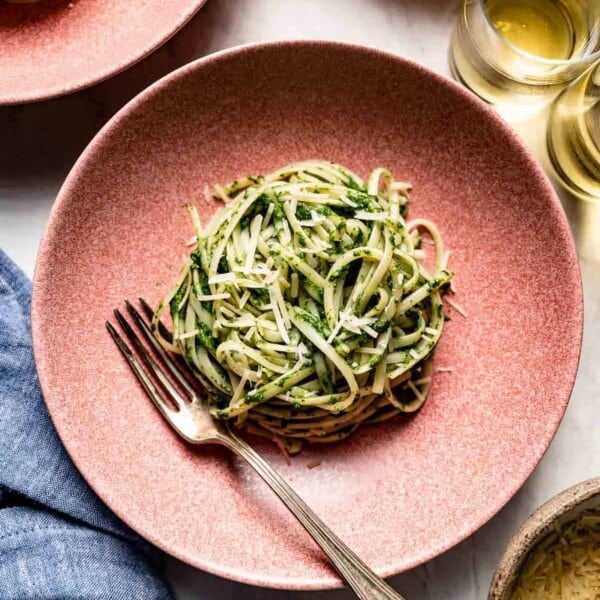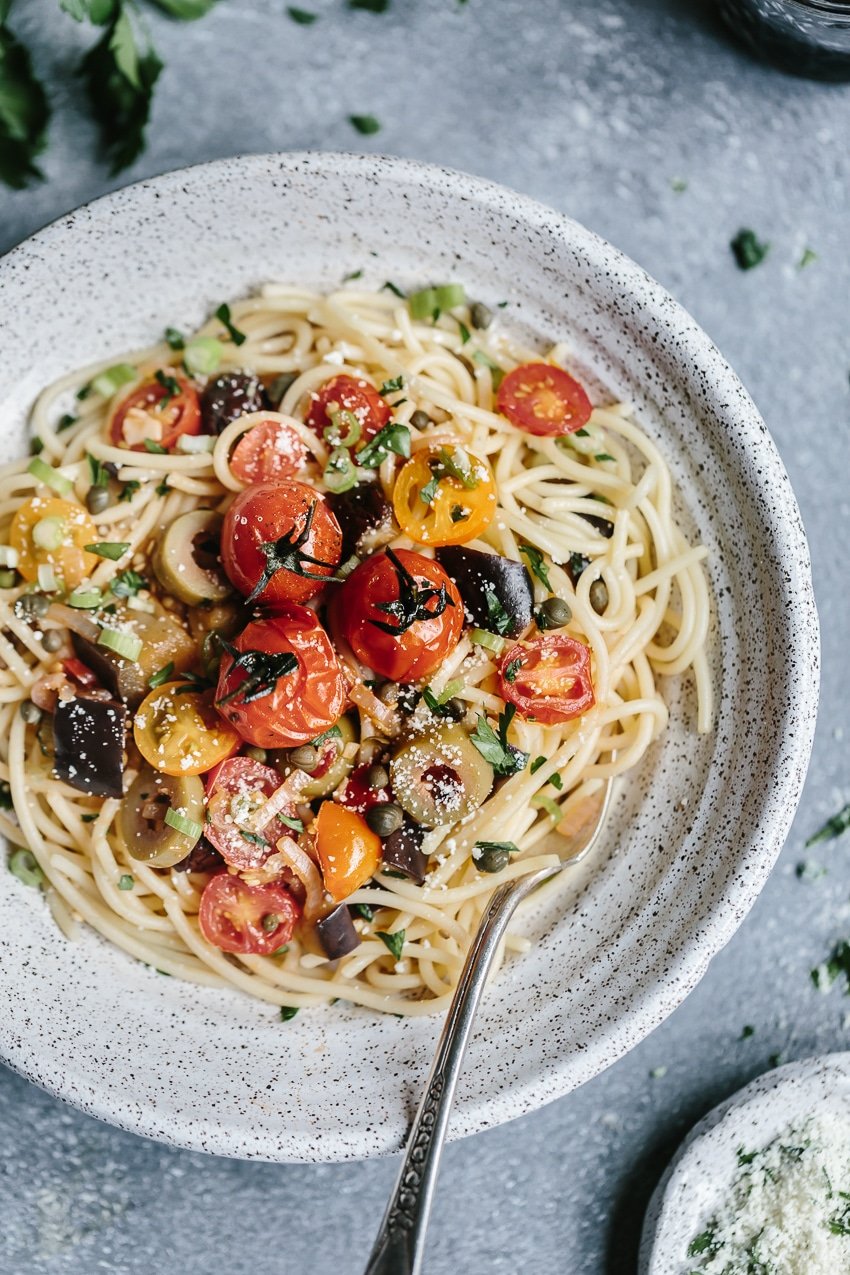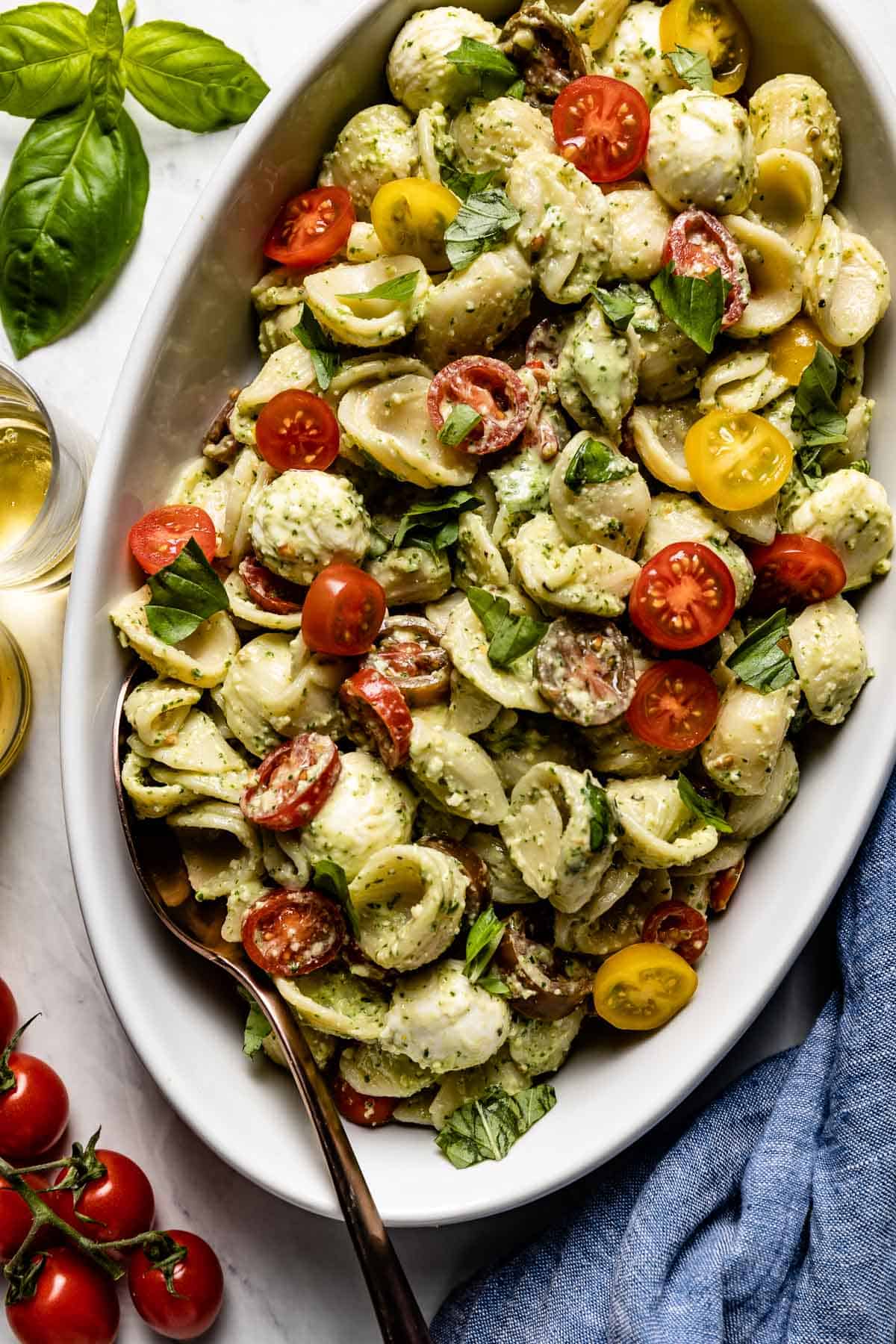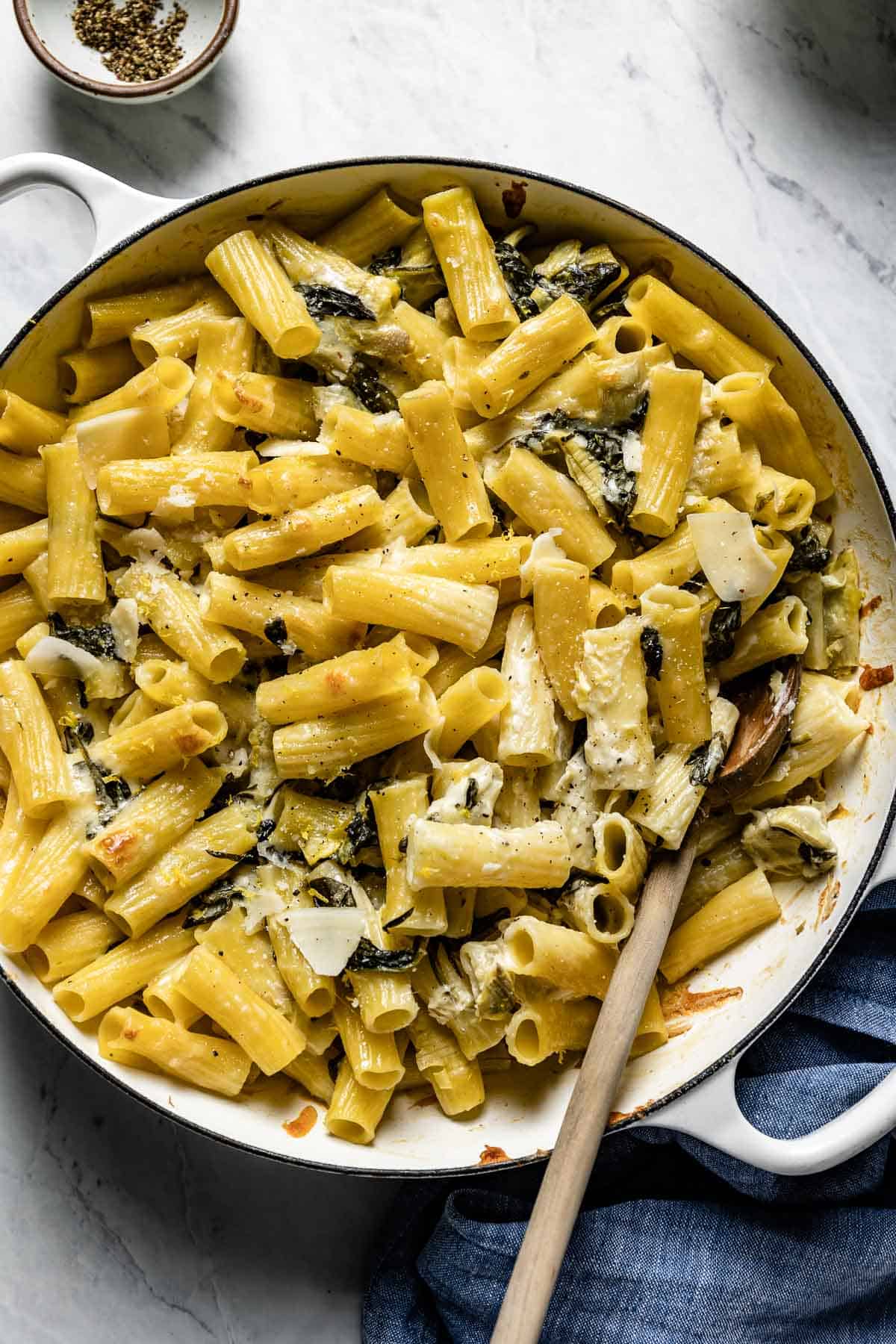I always reach for a tried-and-true pasta recipe when I’m in the mood for something quick, easy, and comforting. If you prefer light, delicious vegetarian pasta recipes like this one, be sure to check out Gigi Hadid Vodka Pasta, Ricotta Lemon Pasta, Garlic Butter Pasta, and Pea and Mushroom Pasta.
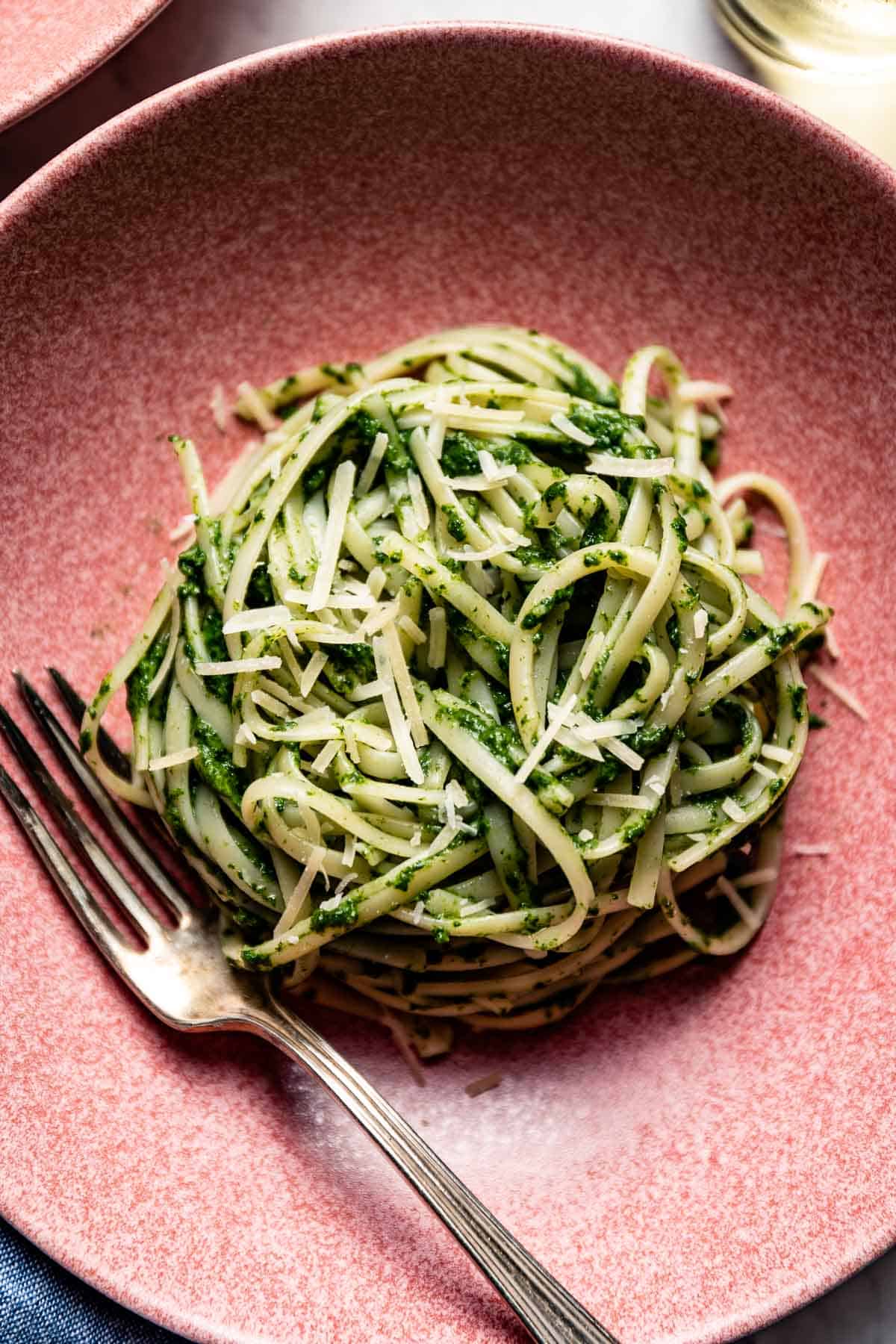
Ingredients
This green pasta recipe requires a few simple ingredients that you likely already have on hand. The nutty parmesan pairs beautifully with the earthy spinach, and a hint of lemon and garlic brightens the dish. Here’s what you’ll need:
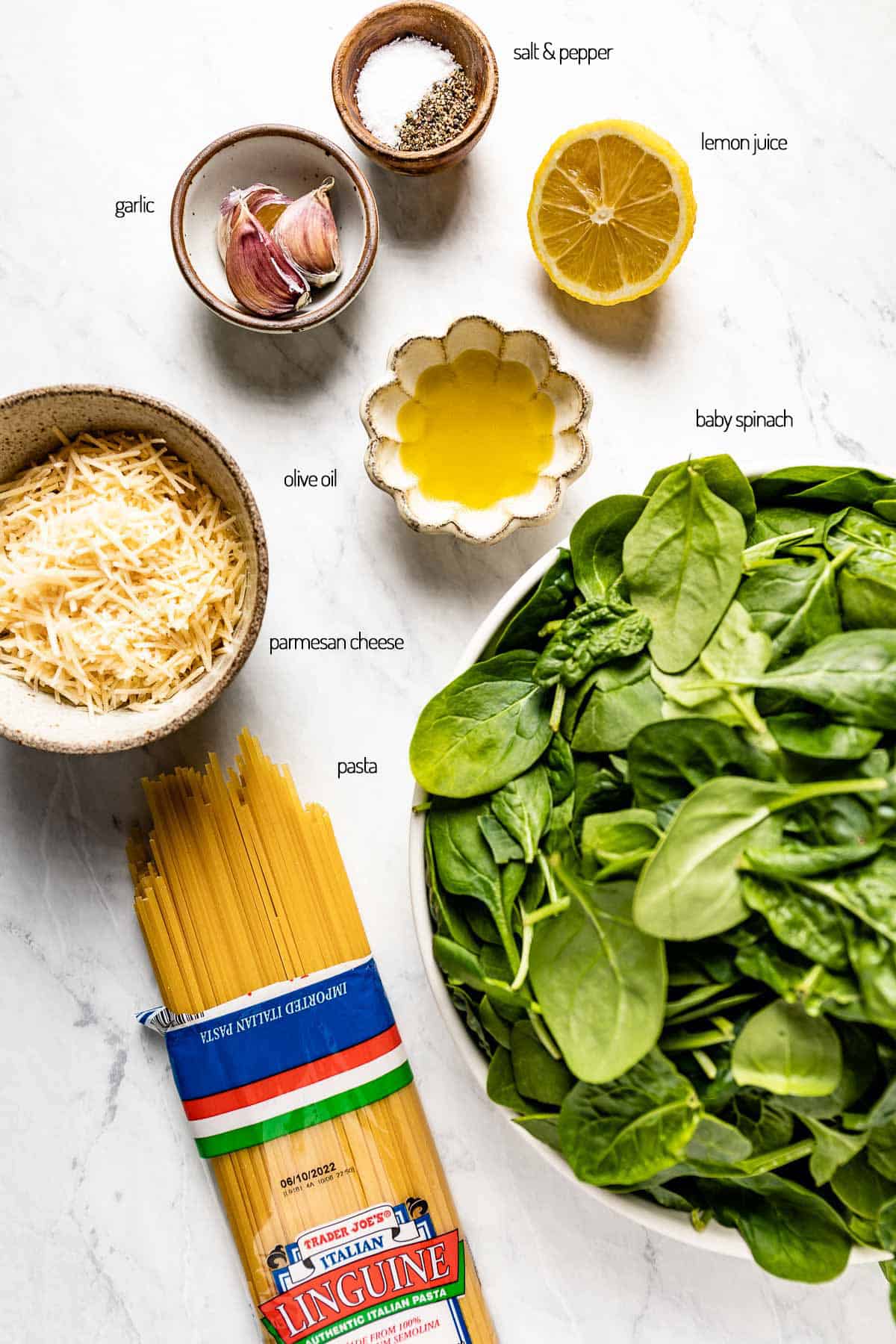
- For the pasta: Any type of pasta would work for this recipe. I used linguine, but any other long or short pasta would also work.
- To make the Italian green pasta sauce: Gather fresh baby spinach, parmesan cheese, garlic, kosher salt, black pepper, lemon juice, and olive oil.
Substitutions and Optional Add-Ins
This green Italian sauce for pasta is so basic that it’s very forgiving when it comes to substitutions. Whether you’d prefer a dairy-free option or like an extra creamy sauce, this recipe will still work for you. Here are a few suggestions:
- Pasta: I prefer green linguine, but feel free to use your pasta of choice. You can make green fettuccine pasta, a green spaghetti sauce, or green pasta noodles. If you’re following a gluten-free diet, you can use chickpea pasta or your favorite gluten-free pasta instead. For best results, follow the package directions for cooking the pasta. If you’d like a carb-free option, try these tasty Zucchini Noodles.
- Cream cheese: For an extra rich green creamy pasta, add two ounces of room-temperature cream cheese into the food processor with the rest of the ingredients.
- Vegan green pasta sauce: You can substitute an equal amount of nutritional yeast for the parmesan cheese for a vegan pasta sauce! Its cheesy, umami flavor is a great substitute for parmesan and pairs well with the earthy flavor of your fresh greens. Just keep in mind that you may need to add more salt to your vegan sauce for pasta if you’re using nutritional yeast.
- Frozen spinach: If you don’t have fresh spinach on hand, you can substitute frozen spinach for this healthy pasta sauce. Make sure to thaw and squeeze out any excess juices and liquid before sauteing it.
- Kale sauce: Kale is a great substitute for this spinach garlic pasta sauce. However, I recommend blanching your kale (for about five minutes in the boiling pasta water) before sauteing it with the rest of the ingredients. Since kale leaves tend to be heartier than spinach leaves, blanching them first will shorten the sauteing time.
- Optional mix-ins: For an Italian green sauce for pasta (aka pasta verde), you can substitute a cup of your greens for a cup of fresh herbs like oregano, parsley, or fresh basil leaves.
- Toppings: Toppings are a great way to customize your green noodle pasta to your liking. Toss in a handful of toasted pine nuts for a delicious crunch, just as we did in my Catalan Style Spinach recipe, or sprinkle your spinach parmesan pasta sauce with some red pepper flakes for a kick of spice.
How to Make Green Pasta Sauce?
I think we can all agree that homemade healthy pasta sauce is always the better option compared to its store-bought version. Fresh, flavorful, and ready in less than 30 minutes, this spinach-based pasta sauce will leave your taste buds wanting more. Here’s how to make it:
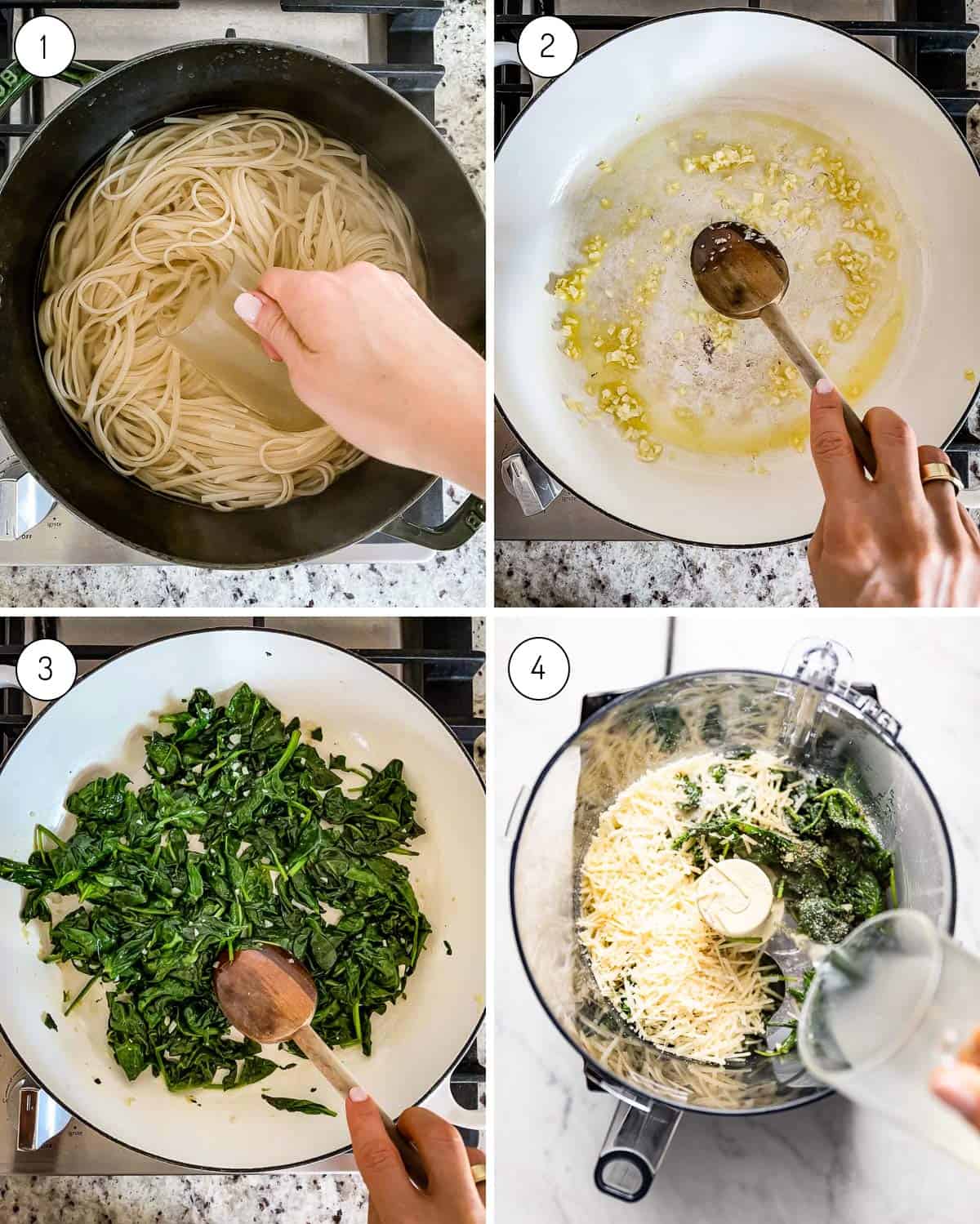
- Cook the pasta: Bring a large pot of water to a boil. Add in the pasta and follow the package instructions to cook until it’s al dente. Once cooked, drain the pasta and save half a cup of the pasta water. Return the pasta to the pot and set aside.
- Saute the garlic: As your pasta cooks, heat the olive oil in a large pan over medium heat and add the garlic. Saute for 1 minute, stirring constantly.
- Add in your leafy greens: Add the spinach, salt, and pepper to the pan of sauteed garlic. Cook, tossing regularly until the spinach has wilted. At first, it will look like it is a lot of spinach, but as it cooks, it will go down to nothing.
- Transfer to a food processor: Transfer your cooked spinach into a food processor or blender and add in the parmesan cheese, lemon juice, and the reserved pasta water.
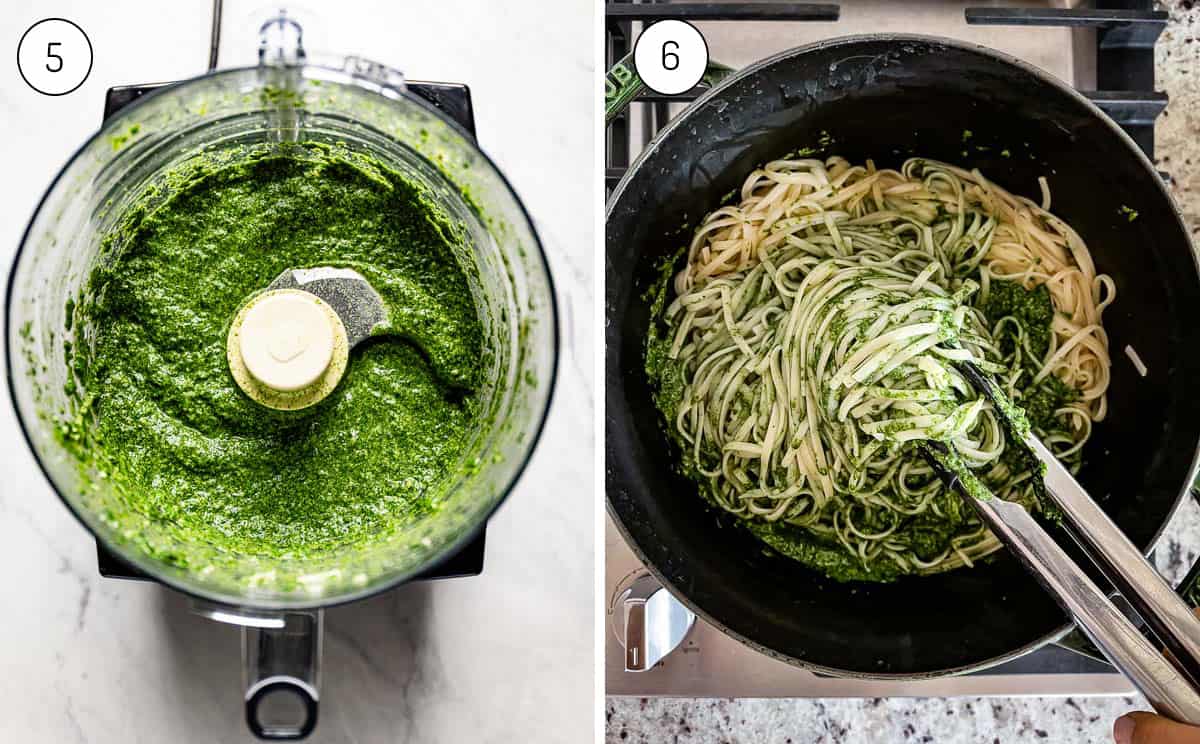
- Blend: Process the spinach sauce for pasta until fully pureed, taste, and add additional seasoning as desired. During the blending process, you may have to stop and scrape the sides of the bowl.
- Combine with the pasta: Pour the blended spinach pasta sauce over the cooked pasta, using tongs to toss and combine gently. Serve your green spinach pasta with extra parmesan cheese on top.
How to Make Ahead, Store Leftovers, and Reheat?
Make this creamy green pasta sauce in no time for a quick, on-demand weeknight meal, or make it ahead of time as part of your meal prep for the week. Here are some storage and reheating tips:
- Make ahead: You can make this creamy spinach pasta sauce up to two days in advance as part of your meal prep. If you’d like to make the sauce before cooking your pasta, you can substitute vegetable stock or water for the pasta water used in the recipe. Be sure to keep it in the fridge in an airtight container.
- Store: To store, let the pasta with green sauce come to room temperature before placing it in an airtight container. It will keep in the fridge for 2-3 days.
- Reheat: Reheat the sauce on the stovetop over low heat until warm. You can also reheat it in the microwave at 30-second intervals, stirring after each interval until warm. For both methods, you may need to add a little water to keep the sauce from drying out.
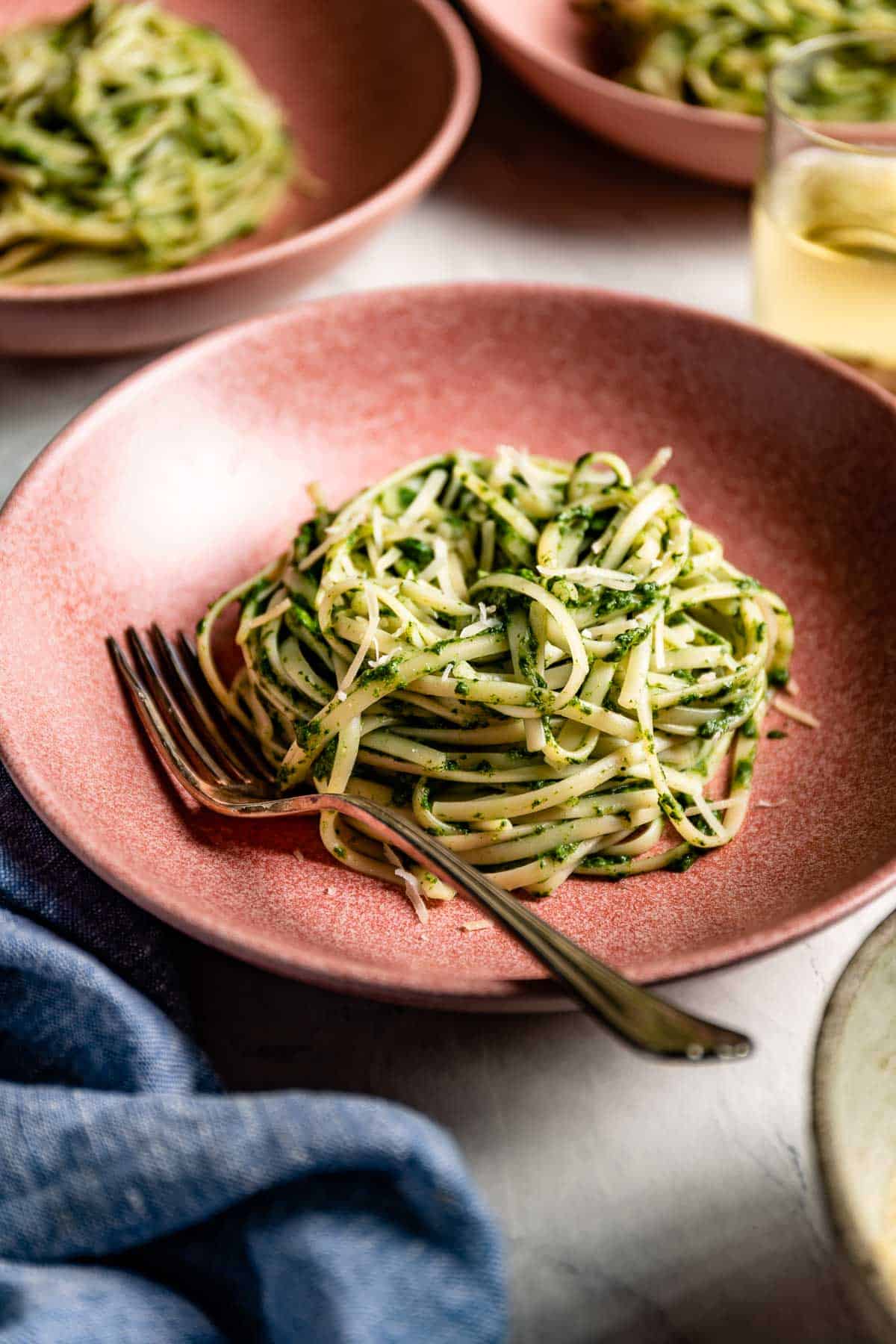
How to Serve?
While you can top a bowl of pasta with this simple healthy pasta sauce for a light lunch or dinner, you can also serve it as a side dish to accompany a number of your favorite entrees. Here are my serving recommendations:
- Vegetarian meals: Need a salad to pair with your new favorite pasta? This pasta with spinach sauce pairs perfectly with any salad, including Kale Brussels Sprout Salad, Classic Caesar Salad, Lemon Arugula Salad, or Sauteed Asparagus and Mushrooms side dish!
- Meat options: Craving some extra protein or meat with your pasta? Green pasta with chicken is a classic pairing, so I recommend serving this super green pasta as a side dish for my Greek Yogurt Chicken or Bone-In Chicken Breasts for a complete meal. To switch up your protein source, try pairing it with my Baked Turkey Breast Tenderloin or Marinated Shrimp Skewers for a flavorful spread.
FAQs
“What is the name of green pasta sauce?” is a common question featured in crossword puzzles! Green pasta sauce, sometimes called green noodle sauce, is often referred to as pesto sauce, which is traditionally made with basil, cheese, garlic, pine nuts, and oil. Our simple, made-from-scratch recipe is a creamy spinach sauce for pasta, which is a lighter alternative to pesto.
Green noodle recipes have many possible variations, but our healthy sauce for pasta is made with spinach, parmesan cheese, lemon juice, garlic, and olive oil.
Other Pasta Recipes You Might Like
If you love this easy healthy pasta sauce and are looking for more healthy pasta sauce recipes, we have plenty of other tasty dishes you will love! Browse the links below for inspiration:
- Baked Spinach and Artichoke Pasta
- Greek Yogurt Pasta Sauce
- Pasta Bolognese Recipe
- Eggplant Pomodoro Pasta
- Tomato and Basil Sauce Recipe
If you try this Green Pasta Sauce recipe or any other recipe on Foolproof Living, please take a minute to rate the recipe and leave a comment below. It helps others who are thinking of making the recipe. And if you took some pictures, be sure to share them on Instagram using #foolproofeats so I can share them on my stories.

Green Pasta Sauce Recipe
Ingredients
- 1 pound spaghetti, linguine, or any other pasta shape you have on hand
- 2 tablespoons olive oil
- 3 cloves garlic, minced
- 10 oz. fresh baby spinach leaves
- ½ cup shredded parmesan cheese, plus more for garnish – 50 gr.
- ½ teaspoon kosher salt
- ½ teaspoon black pepper
- 2 tablespoons lemon juice
- ½ teaspoon lemon zest, optional
Instructions
- Cook the pasta: Fill a large pot with water and add a few tablespoons of salt. Bring to a boil, add pasta and cook until al dente, following the package instructions. Reserve 1/2 cup of pasta water and drain the rest. Return the pasta to the pot and set it aside.
- Saute the garlic: Meanwhile, heat olive oil in a large skillet over medium heat. Add garlic and saute for 1 minute while stirring constantly.
- Add the spinach: Add the spinach leaves, salt, and pepper to the skillet. Cook, tossing often until the spinach is wilted and has lost most of its volume.
- Transfer to a food processor: Transfer the now-cooked spinach to the bowl of a food processor*. Add in the parmesan cheese, lemon juice, and the reserved pasta water.
- Blend: Process until fully pureed, stopping and scraping the sides as necessary. Give it a taste and add more seasoning, if desired.
- Combine with the pasta: Pour the spinach pasta sauce over the cooked pasta, and use tongs to give it a gentle toss to combine.
- Serve: Serve warm with extra parmesan cheese on top and lemon zest, if preferred.
Notes
- Cream cheese: We wanted a green pasta sauce that is more on the healthier side, but if you are after an extra rich, creamy pasta, you can add two ounces of room-temperature cream cheese (or ricotta cheese) into the food processor with the rest of the ingredients.
- Make ahead: You can make this green spinach pasta sauce up to two days in advance as part of your meal prep. If you’d like to make the sauce before cooking your pasta, you can substitute vegetable stock or water for the pasta water used in the recipe. Be sure to keep it in the fridge in an airtight container.
- Store: To store, let it come to room temperature before placing it in an airtight container. It will keep in the fridge for 2-3 days.
- Reheat: Reheat it on the stovetop over low heat until warm. You can also reheat it in the microwave at 30-second intervals, stirring after each interval until warm. For both methods, you may need to add a little water to keep the sauce from drying out.
- Food processor: If you do not have a food processor, you can use a blender.
Nutrition
Nutrition information is automatically calculated, so should only be used as an approximation.
